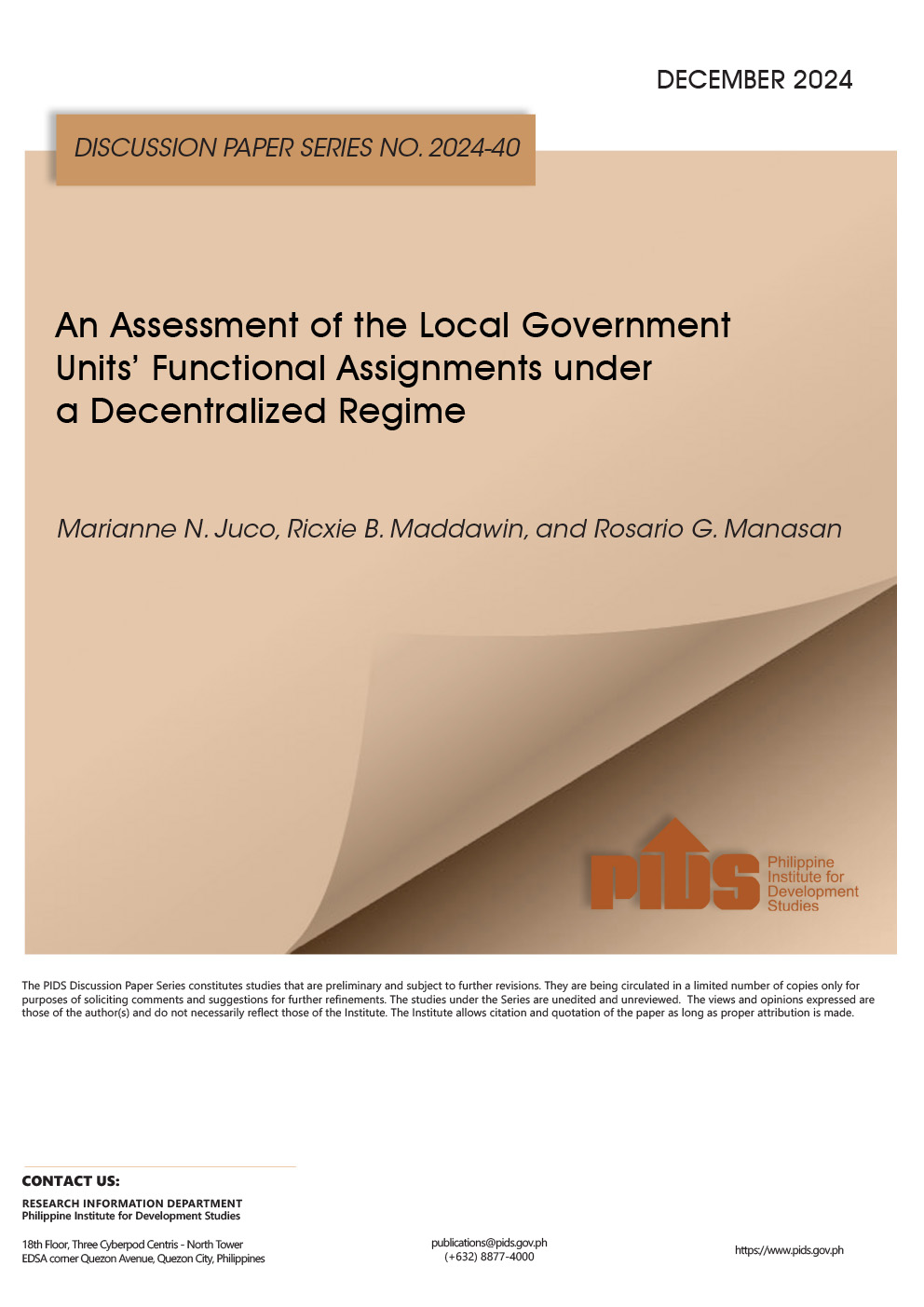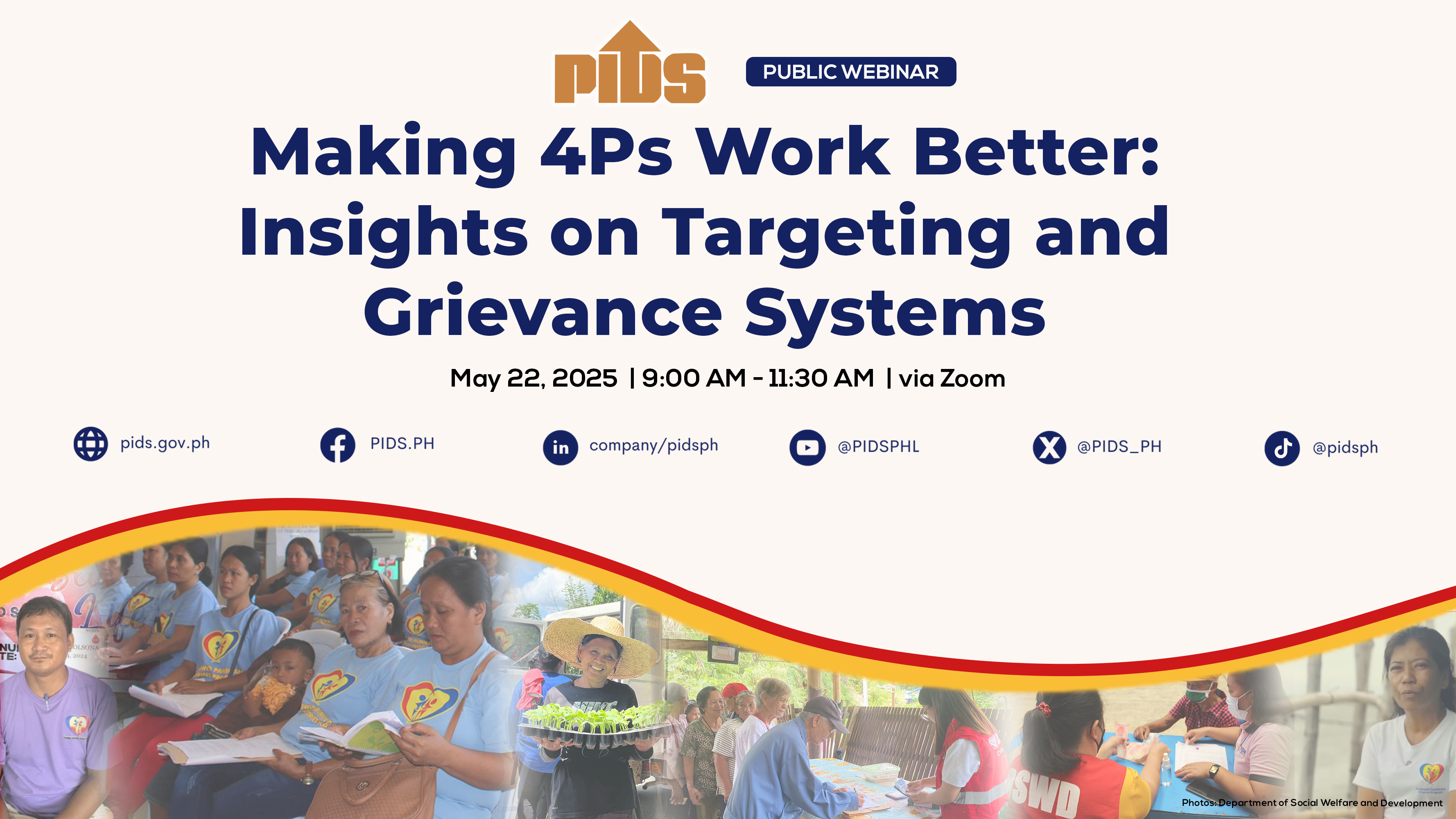Cash dole-outs under the Pantawid Pamilyang Pilipino Program (4Ps) should be indexed to inflation if the government wants the program to make a significant dent on poverty reduction.
This was according to Jose Ramon Albert, senior research fellow of state think tank Philippine Institute for Development Studies (Pids). Albert said the purchasing power of the allocations under the 4Ps have already been eroded through inflation.
The Conditional Cash Transfer (CCT), or 4Ps, is widely regarded as a social-protection mechanism that can help developing countries meet its commitments under the Sustainable Development Goals (SDGs), particularly Goal 1 of eradicating poverty by 2030.
“The government gives P300 per child, but this was the computation back in 2008. [The question is,] is P300 the same today as eight years ago?” Albert asked.
While the government did increase the allocation to include children in high school, Albert said the amount of P500 has not been increased since the change was implemented a couple of years ago.
However, Albert said expanding the CCT Program requires more government resources. This includes any possible increase in the allocation to beneficiaries.
Nonetheless, Albert said the benefits outweigh the costs in the case of the CCTs. This is because its impact, particularly in increasing the enrollment rate of out-of-school youth, has been significant.
Since the program’s inception in 2008, the number of beneficiaries increased to 4.4 million as of end-2015, from 340,000—making it the fourth-largest CCT after those rolled out in India, Brazil and Mexico. The program has expanded rapidly and has evolved over time based on lessons and experience.
Examples of evidence-based program adjustments include increasing the grant for older children and expanding the eligibility cut-off, from 14 years old to 18, to raise the rates of high-school graduation of children from poor families.
The CCT Program provides grants to poor families, if they send their children to school, visit health centers and attend family-development sessions.
Albert added that indexing the CCTs to inflation is just one of the means of addressing income inequality in the Philippines.
He said addressing the needs of the country’s middle class, or those with annual per-capita incomes in 2012 ranging from about P64,317 to P787,572, would also help narrow gaps in incomes. The middle class in the Philippines comprises some 42.19 million households.
“While poverty reduction should be the main focus of development policy, there is a growing need for policy attention to boost the participation of the middle class in growth and development,” according to a study conducted by Albert and Pids research specialist Raymond E. Gaspar and research analyst Martin Joseph M. Raymundo.
The authors said those earning between P7,890 and P15,780 per month belong to the low-income class, while those earning P15,780 to P31,560 a month comprise the lower middle-income class.
There are about 7.1 million households that are considered low income, while 5.8 million are in the lower middle-income category.
The middle-income class earns between P31,560 to P78,900 per month, while those in the upper-middle income earns anywhere from P78,900 to P118,350 per month.//
This was according to Jose Ramon Albert, senior research fellow of state think tank Philippine Institute for Development Studies (Pids). Albert said the purchasing power of the allocations under the 4Ps have already been eroded through inflation.
The Conditional Cash Transfer (CCT), or 4Ps, is widely regarded as a social-protection mechanism that can help developing countries meet its commitments under the Sustainable Development Goals (SDGs), particularly Goal 1 of eradicating poverty by 2030.
“The government gives P300 per child, but this was the computation back in 2008. [The question is,] is P300 the same today as eight years ago?” Albert asked.
While the government did increase the allocation to include children in high school, Albert said the amount of P500 has not been increased since the change was implemented a couple of years ago.
However, Albert said expanding the CCT Program requires more government resources. This includes any possible increase in the allocation to beneficiaries.
Nonetheless, Albert said the benefits outweigh the costs in the case of the CCTs. This is because its impact, particularly in increasing the enrollment rate of out-of-school youth, has been significant.
Since the program’s inception in 2008, the number of beneficiaries increased to 4.4 million as of end-2015, from 340,000—making it the fourth-largest CCT after those rolled out in India, Brazil and Mexico. The program has expanded rapidly and has evolved over time based on lessons and experience.
Examples of evidence-based program adjustments include increasing the grant for older children and expanding the eligibility cut-off, from 14 years old to 18, to raise the rates of high-school graduation of children from poor families.
The CCT Program provides grants to poor families, if they send their children to school, visit health centers and attend family-development sessions.
Albert added that indexing the CCTs to inflation is just one of the means of addressing income inequality in the Philippines.
He said addressing the needs of the country’s middle class, or those with annual per-capita incomes in 2012 ranging from about P64,317 to P787,572, would also help narrow gaps in incomes. The middle class in the Philippines comprises some 42.19 million households.
“While poverty reduction should be the main focus of development policy, there is a growing need for policy attention to boost the participation of the middle class in growth and development,” according to a study conducted by Albert and Pids research specialist Raymond E. Gaspar and research analyst Martin Joseph M. Raymundo.
The authors said those earning between P7,890 and P15,780 per month belong to the low-income class, while those earning P15,780 to P31,560 a month comprise the lower middle-income class.
There are about 7.1 million households that are considered low income, while 5.8 million are in the lower middle-income category.
The middle-income class earns between P31,560 to P78,900 per month, while those in the upper-middle income earns anywhere from P78,900 to P118,350 per month.//











